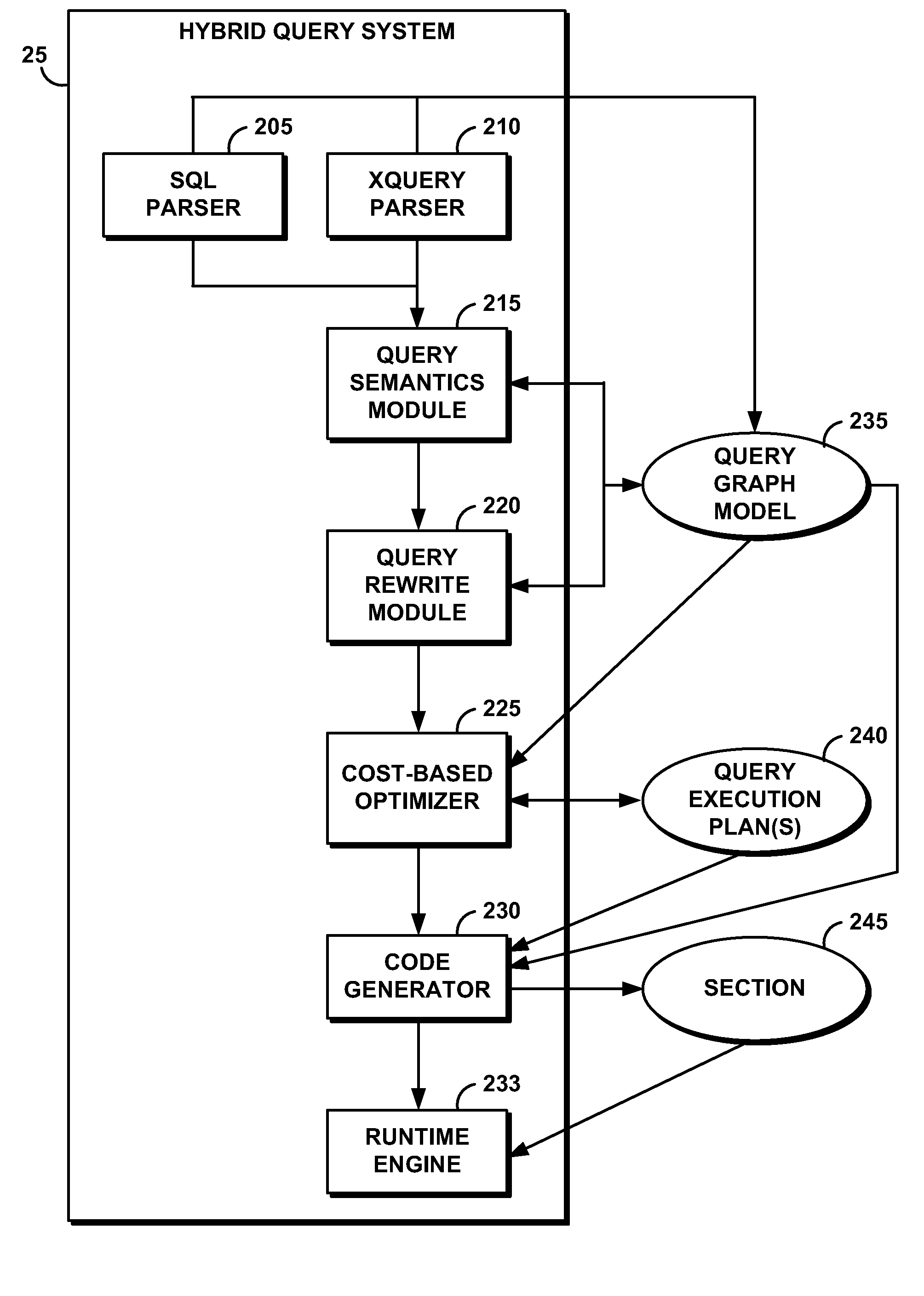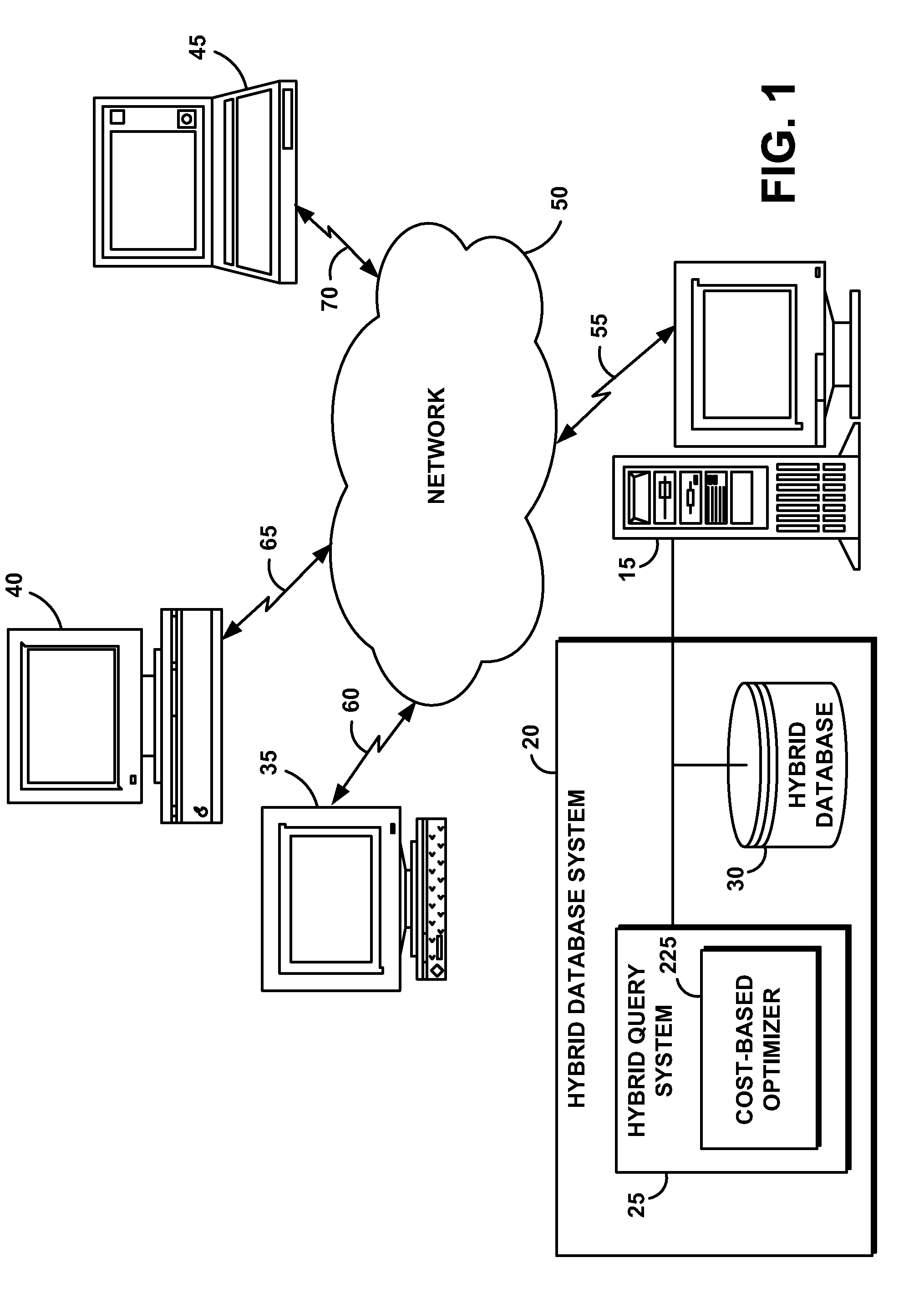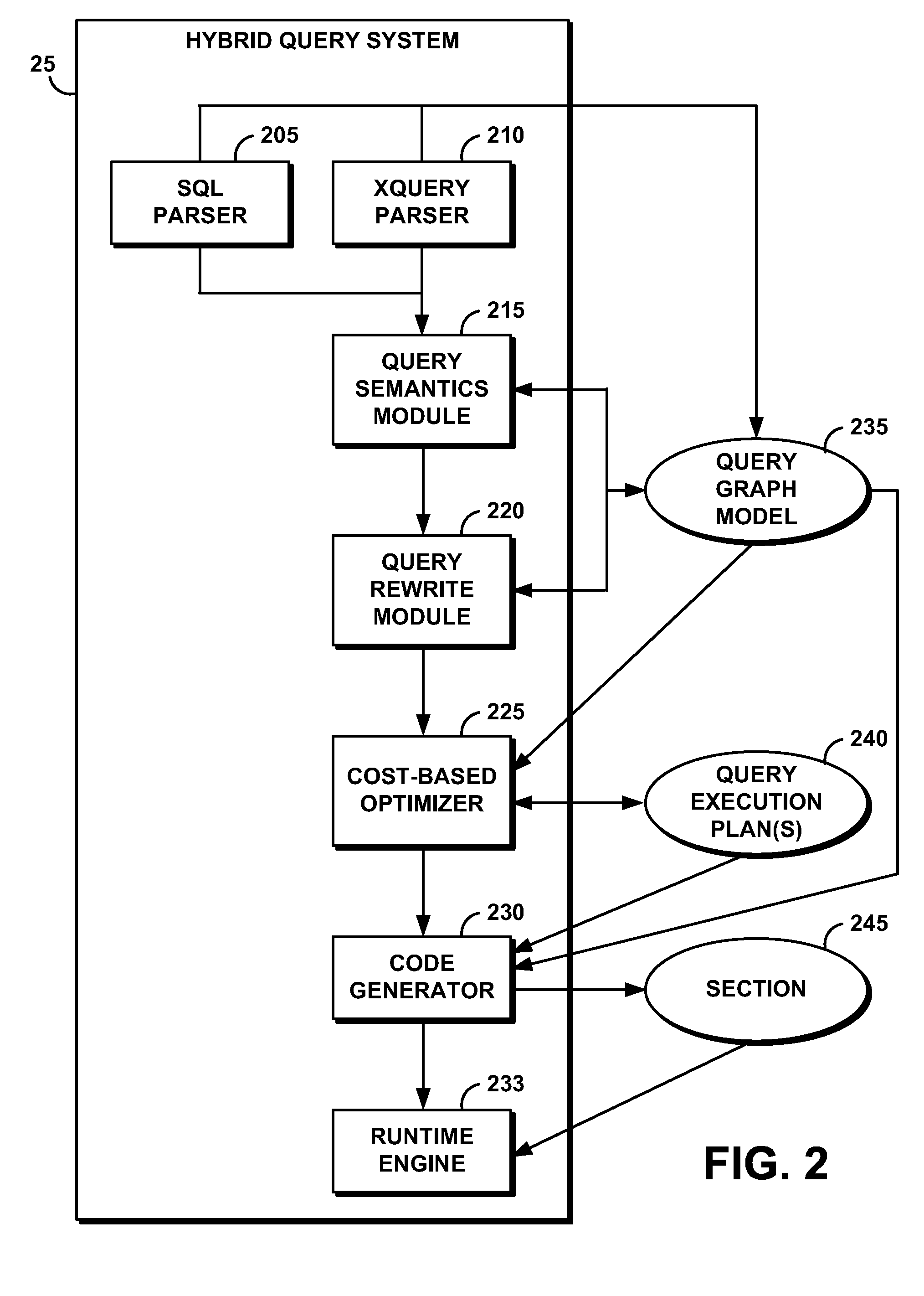System and Method for Optimizing Query Access to a Database Comprising Hierarchically-Organized Data
a hierarchical data and database technology, applied in the field of database access, can solve the problems that the huge investment in relational database technology over the last three decades is unlikely to be supplanted immediately
- Summary
- Abstract
- Description
- Claims
- Application Information
AI Technical Summary
Benefits of technology
Problems solved by technology
Method used
Image
Examples
example 3
Exemplary XPath Expression
[0072]
for $i in db2-fn:xmlcolumn(‘PRODUCT.DESCRIPTION’) / / product[10 > . / / price[@currency=“USD”]] let $j = $i / / namereturn {$i / @id}{$j};
[0073]Assume that data distribution statistics indicate that this collection contains a total of 1000 documents, which contain 200 “product” elements with a qualifying “price” descendant. These 200 “products” have among them 500 “name” descendants, and each “product” has an “id” attribute. The fanouts of three XPath expressions in the query of example 3 are shown in Table 1.
TABLE 1Fanouts generated by cost-based optimizer225 for XPath expressions of Example 3.FanoutXPath ExpressionComputationCardinalitySequence Size / / product[...]200 / 1000 = 0.20.21$i / / name500 / 200 = 2.512.5$i / @id111
[0074]Cost-based optimizer 225 uses function trees to model a query expression (e.g., an XPath expression). Function trees (further referenced herein as fanout trees) are used to represent relational predicates. Cost-based optimizer 225 models each s...
PUM
 Login to View More
Login to View More Abstract
Description
Claims
Application Information
 Login to View More
Login to View More - R&D
- Intellectual Property
- Life Sciences
- Materials
- Tech Scout
- Unparalleled Data Quality
- Higher Quality Content
- 60% Fewer Hallucinations
Browse by: Latest US Patents, China's latest patents, Technical Efficacy Thesaurus, Application Domain, Technology Topic, Popular Technical Reports.
© 2025 PatSnap. All rights reserved.Legal|Privacy policy|Modern Slavery Act Transparency Statement|Sitemap|About US| Contact US: help@patsnap.com



